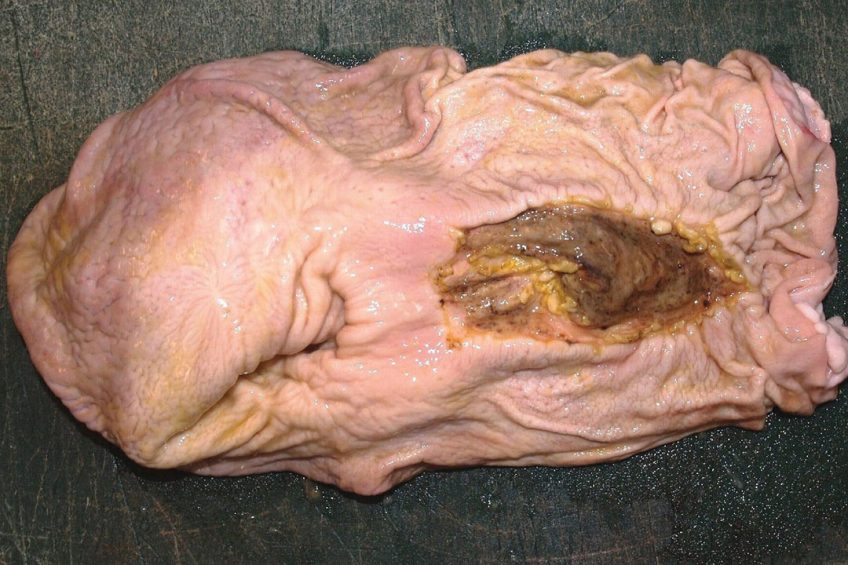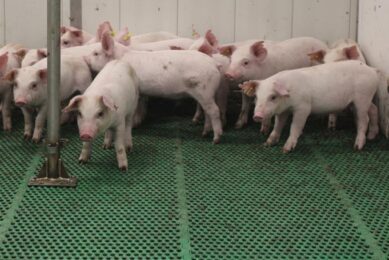Gastric ulcers in pigs caused by 2 bugs

Gastric ulcers in pigs are the result of the interaction of 2 types of bacteria.
That was the outcome of a recent PhD study by Chloë De Witte, completed at Ghent University, Belgium. In 2016, a newly discovered bug, Fusobacterium gastrosuis, was revealed to be playing a role in the creation of gastric ulcers in pigs. That was reported at the International Pig Veterinary Society (IPVS) Congress in 2016 in Dublin, Ireland.
In her PhD thesis, Dr De Witte explained that it is not only F. gastrosuis playing a role, but also Helicobacter suis, a bug that has long been associated with gastric ulceration.
Helicobacter suis occurring frequently
A press release shared by the university stated: ”Helicobacter suis is a bacteria frequently occurring in a pig’s stomach. Even humans can be infected by this bug. An infection with Helicobacter suis could lead to various clinical signs, including gastric ulcers. However, how that works exactly, wasn’t quite clear until recently.”
The press release continues to say, “The results of the research show that Helicobacter suis influences the production of gastric acid. The effect depends on the pigs’ age. It turns out that, at an age of 6 months, for instance, pigs do create less gastric acid. That reduction will pave the way for a different species of bacteria to come in, i.e. Fusobacterium gastrosuis. That bacterium potentially play a role in the coming into existence of lesions because the bacterium kills the stomach wall cells. In grown-up pigs, the production of gastric acids grows, resulting in even worse lesions.”

Read more about pig health in the Pig Progress Health Tool
The researcher indicated that the influence of both bacteria needs further studying, to fight gastric ulcers more efficiently. This could both influence animal welfare as well as positively influence economic outcome.
Clinical signs of gastric ulcers in pigs
Animals with severe gastric ulcers show clinical symptoms like stomach ache, vomiting (after feed intake), paleness (anaemia), or overall reduced productivity. According to the researchers at Ghent University, currently there is no treatment protecting pigs completely from gastric ulceration.











